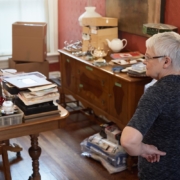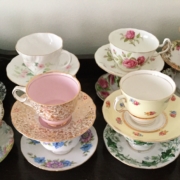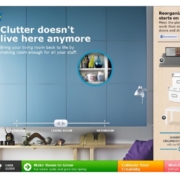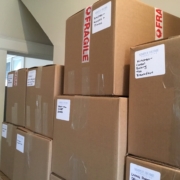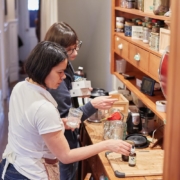To Rent a Storage Unit or Not…That is the Question!
The comfort of consumption leads many of us to buy a lot of things; things we need, use, and love, along with plenty of things we don’t need, use, or care for. Which means we end up accumulating a lot in our homes.
So, what do we do when there is more stuff than we can handle or store in our homes? Rent a storage unit!
Why You Should Rent a Storage Unit
Now, there are several good reasons to rent a storage unit, namely when you are moving from one home to another and the latter isn’t yet ready; you live in a city where living space is extremely costly and storing items makes better financial sense (think New York City), or you have seasonal equipment, large vehicles, etc.
Renting a storage unit for a few months can be a good temporary solution for many people. However, once you leave items in a storage unit for more than a year, the rental is no longer temporary and may not make financial or practical sense.
According to the Self Storage Association, more than half of rental units are kept for more than a year, so, what is really driving the self-storage industry, and why?
In most scenarios, it is simply a case of owning too much stuff and having a hard time letting go of it. According to the Self Storage Association (SSA), in 1995, only one in 17 households rented a self-storage unit, whereas in 2008, one in 10 households rented a unit. We can guess why – just look at how many people are shopping at Walmart, IKEA, Costco, and online merchants every single day!
How Much Does a Storage Unit Cost?
Reports indicate that the average national monthly cost of a climate-controlled rental space ranges from $1.00 to $1.63 per square foot, which translates to about $1,300 – $2,000 a year for a 10’ x 10’ unit.
However, a storage unit’s price will greatly depend on a variety of factors, including the size of the unit, where you’re renting the unit and how long you’re renting the unit. Other special features that can be purchased include climate control, indoor unit versus an outdoor unit, items stored (RV vs. boxes), level of service (self-service vs. full service), add-ons such as packing bins and supplies, labour, and insurance (many storage items can be covered by “off-premises home insurance coverage”),
So why are People Paying These Hefty Fees?
Here’s how we are justifying the rental of all these storage units:
- Attachment to Stuff
For many people, getting rid of things is extremely difficult – it’s emotional and carries great weight. A person might find it necessary to rent storage unit in order to house all this “necessary” stuff.
- Future Needs
If you are storing things that no longer fit or “work” in your new home, thinking that you may use these things in the future or “just in case,” you’re paying a hefty price to hold onto them. Unless your downsizing project is temporary, it’s time to sell or donate your items, and live in the here and now.
- Too Busy to Sell My Things
Having a yard sale or selling items on eBay or Facebook is a good way to deal with too much stuff. Planning ahead and thinking through options before a move and subsequent rental of a storage unit makes good sense. If it is too much, hire someone to help.
- Too Busy to Get Rid of My Things
By leaving items in a storage unit indefinitely, you are paying a lot month after month. As the years go by, a storage unit can turn into a huge financial loss. Feeling overwhelmed and ill-equipped to deal with stuff is one reason people procrastinate, according to Psychology Today. Therefore, if it is too hard to do it yourself, hire a professional and just do it.
According to Simply Home Downsizing’s Pauline Duhart, “Indecision about what to do with extra items comes down to procrastination. People end up spending money on storage units because it is hard to make a decision.
A few questions to ask yourself as you are looking at your overstuffed garage, attic, closets and basements, include:
Would You Buy it Today?
If you’re no longer using clothes that are out of style or furniture you put away to make room for new items in your re-modelled home, why save them?
Is it Easily Replaceable?
Consider the 20/20 rule. If you have a used possession that you could repurchase for less than $20 or borrow it from a neighbour in 20 minutes or less, time to let it go.
Will One be Enough?
Memorabilia and family keepsakes are an important part of peoples’ lives for sure. Perhaps choosing one truly memorable item makes sense. One item of value can keep the connection to the person/experience, no need for duplicates.
Can I Make Some Money by Letting go of Things?
Thanks to Kijiji, Craig’s List, Facebook and MaxSold, there are many opportunities to earn money by keeping less.
“We can help people transition away from renting a storage unit by de-cluttering, downsizing and organizing items before a move or transition, so that clients avoid renting a storage unit at all, saving money, time, and resources”, says Duhart.
Whether you need to organize your own space, help a loved one move into a smaller home, or manage an estate clearing, our team of experienced professionals will guide you carefully and comfortably to your desired result. Contact us today to learn more about our services.
~ The Simply Home Team


